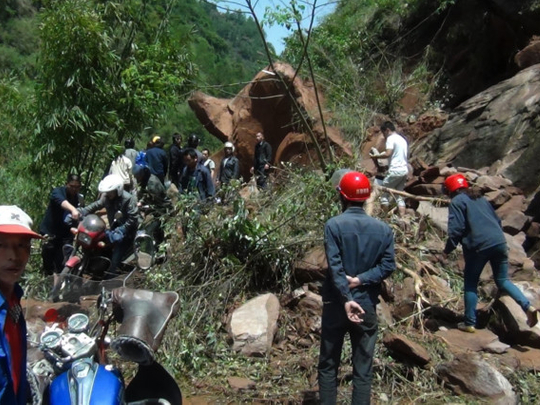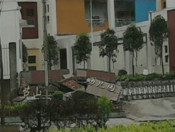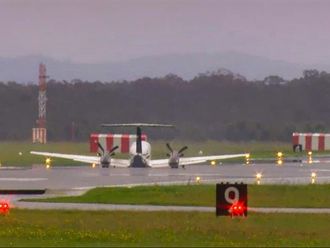
Chengdu: Dozens of people were killed and more than 1,000 injured when an earthquake hit China's southwestern Sichuan province on Saturday, five years after a massive quake devastated the area.
The shallow quake struck near Lushan county in the city of Ya'an on the edge of the Tibetan Plateau just after 8am (0000 GMT), setting off landslides, destroying homes and triggering a major rescue operation.
Seven hours after the quake struck, the death toll stood at 120, according to reports.
Lushan authorities' estimates of the injured ranged from 1,000 to 2,200, while the provincial government said more than 10,000 homes were destroyed.
Local seismologists registered the quake at magnitude 7.0 while the US Geological Survey gave it as 6.6 at a depth of 12 kilometres (seven miles). More than 260 aftershocks followed, the People's Daily said on its website.
The shaking was felt in the provincial capital Chengdu, 110 kilometres to the east, and even in the megacity of Chongqing several hundred kilometres away.
Panicked residents fled into the streets, some of them still in their slippers and pyjamas.
"Members of my family were woken up. They were lying in bed when the strong shaking began and the wardrobes began shaking strongly," said a 43-year-old Chongqing resident surnamed Wang. "We grabbed our clothes and ran outside."
About 6,000 soldiers and police were heading to the area to help rescue work, the Xinhua news agency said.
Some had to contend with roads blocked by debris, CCTV reported, while one military vehicle carrying 17 troops plummeted over a cliff, killing one soldier and injuring seven others, Xinhua said.
"There are mountains on all sides, it is very easy to trigger mudslides and very dangerous," one user wrote on Sina Weibo, China's version of Twitter.
The disaster evoked comparisons to the 2008 Sichuan quake, the country's worst in decades, which left 87,000 people missing or dead, and President Xi Jinping ordered all out efforts to minimise casualties, Xinhua said.
Prime Minister Li Keqiang arrived in Sichuan in the afternoon and was taking a helicopter to the quake zone.
"The current most urgent issue is grasping the first 24 hours since the quake's occurrence, the golden time for saving lives," he was quoted as saying.
Amid the rescue efforts, a 30-year-old pregnant woman surnamed Zhao was pulled out of the rubble along with a young child and sent to hospital for treatment, the People's Daily said on its Weibo account.
A local TV journalist due to get married on Saturday turned up instead for work and a photograph of her reporting on the disaster in her wedding dress with bright makeup and a corsage was widely circulated on Weibo.
Meanwhile, Ya'an residents were offering to donate badly needed blood, the People's Daily said.
But volunteers outside the city were discouraged from flocking to Ya'an to help with relief efforts, Xinhua said, to avoid blocking already busy phone lines and worsening road congestion.
"A fair amount of telecoms facilities have been damaged," it said.
Three reservoirs in the area had shown cracks and people downstream were being relocated, a Sichuan government website said.
Pandas at a reserve less than 50 kilometres from the epicentre were not harmed, Xinhua said, citing an employee.
A Sina Weibo user posted a photo purportedly showing a badly damaged kindergarten in Lushan, its dark red stone slabs lying on the ground beside a row of trees. The authenticity of the photo could not be verified.
"Hang in there Ya'an!" the user wrote.
Weibo users in other cities reported feeling tremors.
Residents ran onto the street to get away from high rises, made phone calls and cried, a Sichuan government website reported. A few had even packed bags in case they needed to take shelter elsewhere.
The 2008 Sichuan quake, which struck west-northwest of Chengdu, generated an outpouring of support, with volunteers rushing to the scene to offer aid and then-premier Wen Jiabao also visiting.
But there was public anger after the discovery that many schools fell while other buildings did not, creating suspicion of corruption and corner-cutting in construction.
The deaths of the children became a sensitive and taboo subject in the heavily controlled domestic media and social media websites.














